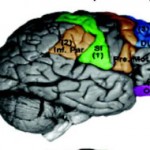 5/5/2011 – Recent scientific articles reviewed the ability of cannabis and cannabinoids to treat pain, especially neuropathic pain. This may be new hope for doctors who are struggling to treat these conditions. Clinical trials on humans using cannabis in various forms (smoked, extracts, oral THC, synthetic analogues) were reviewed by different research teams. Three recent reviews of those human trials demonstrate that cannabis and cannabinoids are effective for treating certain types of chronic pain with acceptable side effects.
5/5/2011 – Recent scientific articles reviewed the ability of cannabis and cannabinoids to treat pain, especially neuropathic pain. This may be new hope for doctors who are struggling to treat these conditions. Clinical trials on humans using cannabis in various forms (smoked, extracts, oral THC, synthetic analogues) were reviewed by different research teams. Three recent reviews of those human trials demonstrate that cannabis and cannabinoids are effective for treating certain types of chronic pain with acceptable side effects.
Meaning, the only medications that have been shown to effectively alleviate HIV/AIDS neuropathic pain are not available on the market. Notably “smoked cannabis” was shown to be effective for the treatment of HIV neuropathy, a condition that affects more than 40% of the estimated 33 million people currently living with HIV.
A University of Pennsylvania research team published a similar review concluding that, “there is strong evidence for a moderate analgesic effect in peripheral neuropathic and central pain conditions, and conflicting evidence for their use in nociceptive pain. For spasticity, most controlled studies demonstrate significant improvement. Adverse effects are not uncommon with cannabinoids, though most are not serious and self-limiting.”
Last but not least, researchers from Canada concluded, that “overall the quality of trials was excellent. Fifteen of the eighteen trials that met inclusion criteria demonstrated a significant analgesic effect of cannabinoid as compared to placebo, several reported significant improvements in sleep. There were no serious adverse effects. Adverse effects most commonly reported were generally well tolerated, mild to moderate in severity and led to withdrawal from the studies in only a few cases (Lynch et al).”
This team from was from Dalhousie University Department of Anesthesia and Pain Medicine, Hospital for Sick Children, University of Toronto. The researchers go on to say, “this systematic review of 18 recent good quality randomized trials demonstrates that cannabinoids are a modestly effective and safe treatment option for chronic non-cancer (predominantly neuropathic) pain.”
Traumatic pain is scratching your arm, banging your thumb with a hammer or post-operative pain (surgery). But neuropathic pain is something completely different because it is generated by diseases (Multiple Sclerosis, HIV/AIDS, amputation) or as a side effect from medication toxicity. Essentially the brain begins sending pain signals out to the body for no reason. Patients say they experience it as a burning or shooting pain sensation in their hands and feet at first. Neuropathic pain often progresses to become much more intense. Opiates do not seem to have any impact in certain groups of patients. Many HIV/AIDS patients use cannabis therapy already today; anecdotal reports have been confirmed with successful results in top-quality clinical trials.
Read more science at Freedomisgreen.com
Inhaled Marijuana May Keep Brain Cancer in Remission
A Brief History of Cannabinoid Research
 Jahan Marcu is currently investigating the pharmacology of cannabinoid receptors. He was working at the California Pacific Medical Center Research Institute when exciting discoveries were made showing enhanced anti-cancer effects with THC and CBD from the Cannabis plant. The findings were published in the Journal of Molecular Cancer Therapeutics. In 2009 he received the Billy Martin Award from the International Cannabinoid Research Society (ICRS). Jahan is currently the vice-chair the Medical and Scientific Advisory Board at Americans for Safe Access (ASA). Contact: science { at } freedomisgreen.com
Jahan Marcu is currently investigating the pharmacology of cannabinoid receptors. He was working at the California Pacific Medical Center Research Institute when exciting discoveries were made showing enhanced anti-cancer effects with THC and CBD from the Cannabis plant. The findings were published in the Journal of Molecular Cancer Therapeutics. In 2009 he received the Billy Martin Award from the International Cannabinoid Research Society (ICRS). Jahan is currently the vice-chair the Medical and Scientific Advisory Board at Americans for Safe Access (ASA). Contact: science { at } freedomisgreen.com
DISCLAIMER: The views and opinions expressed are those of the author and do not necessarily represent any University, business or affiliates. While the information provided in this blog is from published scientific studies it is not intended to diagnose or treat any disease.